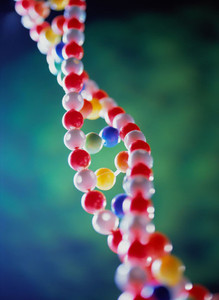Naming conventions from around the world was one of the topics investigated in a study by researchers from the Tufts Center for the Study of Drug Development (Tufts CSDD) [1].
The World Health Organization (WHO) first introduced the concept of a biological qualifier (BQ) for naming biologicals back in 2014. WHO has issued a draft proposal, which suggests that the BQ would be used in conjunction with the International Nonproporietary Name (INN) and would consist of a random alphabetic code, made up of four random consonants [2].
In the European Union, both the brand name and INN are used to identify the specific biological product, whether it is an originator product or a biosimilar. Europe has approved biosimilars with the same non-proprietary names as their reference biologicals for more than six years in a system that has proved effective. Biosimilars have been successfully tracked in the marketplace using their brand name and other identifiers, e.g. batch numbers, currently in place for product recognition. European regulators have reported 96.2% product identification across three product classes (filgrastim, epoetin, somatropin) [3].
Japan’s policy includes the INN of the reference product, with a biosimilar qualifier and a code for the order of approval. The South African naming convention policy requires that the holder of the certificate of registration ‘is responsible for ensuring that the product is traceable, i.e. reflection of the proprietary name of the product on the adverse event reports’. Australia’s drug regulatory agency, the Therapeutic Goods Administration, had previously proposed that all biosimilars in Australia have distinguishable names, but is now reviewing its policy following recent international developments in the area of biosimilar naming’ [4].
Although US Food and Drug Administration (FDA) approved its first biosimilar, Zarxio, on 6 March 2015, the agency has not yet finalized its naming policy. FDA has designated a placeholder non-proprietary name for this product – filgrastim-sndz – and stated that this ‘should not be viewed as reflective of the agency’s decision on a comprehensive naming policy for biosimilar and other biological products’ [5].
FDA has, however, issued draft guidance on naming biosimilars. The agency is proposing that all biologicals and biosimilars have non-proprietary names and that a 4-letter suffix be added to the names to distinguish them from each other. The suffix would be composed of four lowercase letters, and not carry any meaning. For example, the non-proprietary name of a reference product could be replicamab-cznm and a biosimilar to that product could be replicamab-hixf [6].
Conflict of interest
The authors of the research paper [1] declared that there were no conflicts of interest.
Editor's comment
Readers interested to learn more about naming of biosimilars are invited to visit www.gabi-journal.net to view the following manuscript published in GaBI Journal:
Biosimilars naming, label transparency and authority of choice – survey findings among European physicians
If you are interested in contributing a research article in a similar area to the GaBI Journal, please send us your submission here.
Related articles
AE reporting for biologicals
Biosimilars and interchangeability
Biosimilar naming and AE reporting
References
1. Stergiopoulos S, Getz K. Evaluating ae reporting of two off-patent biologics to inform future biosimilar naming and reporting practices. Drug Saf. 2015;38(8):687-92.
2. GaBI Online - Generics and Biosimilars Initiative. WHO issues draft proposal for its biological qualifier [www.gabionline.net]. Mol, Belgium: Pro Pharma Communications International; [cited 2015 Nov 20]. Available from: www.gabionline.net/Policies-Legislation/WHO-issues-draft-proposal-for-its-biological-qualifier
3. European Medicines Agency. Vermeer N, et al. Traceability of biopharmaceuticals in spontaneous reporting systems. 2012 May 25 [cited 2015 Nov 20]. Available from: www.ema.europa.eu/docs/en_GB/document_library/Presentation/2012/05/WC500127934.pdf
4. GaBI Online - Generics and Biosimilars Initiative. Australia reviewing plans for naming biosimilars [www.gabionline.net]. Mol, Belgium: Pro Pharma Communications International; [cited 2015 Nov 20]. Available from: www.gabionline.net/Guidelines/Australia-reviewing-plans-for-naming-biosimilars
5. GaBI Online - Generics and Biosimilars Initiative. FDA approves its first biosimilar [www.gabionline.net]. Mol, Belgium: Pro Pharma Communications International; [cited 2015 Nov 20]. Available from: www.gabionline.net/Biosimilars/News/FDA-approves-its-first-biosimilar
6. GaBI Online - Generics and Biosimilars Initiative. FDA issues draft guidance on naming biologicals [www.gabionline.net]. Mol, Belgium: Pro Pharma Communications International; [cited 2015 Nov 20]. Available from: www.gabionline.net/Guidelines/FDA-issues-draft-guidance-on-naming-biologicals
Permission granted to reproduce for personal and non-commercial use only. All other reproduction, copy or reprinting of all or part of any ‘Content’ found on this website is strictly prohibited without the prior consent of the publisher. Contact the publisher to obtain permission before redistributing.
Copyright – Unless otherwise stated all contents of this website are © 2015 Pro Pharma Communications International. All Rights Reserved.








 0
0











Post your comment